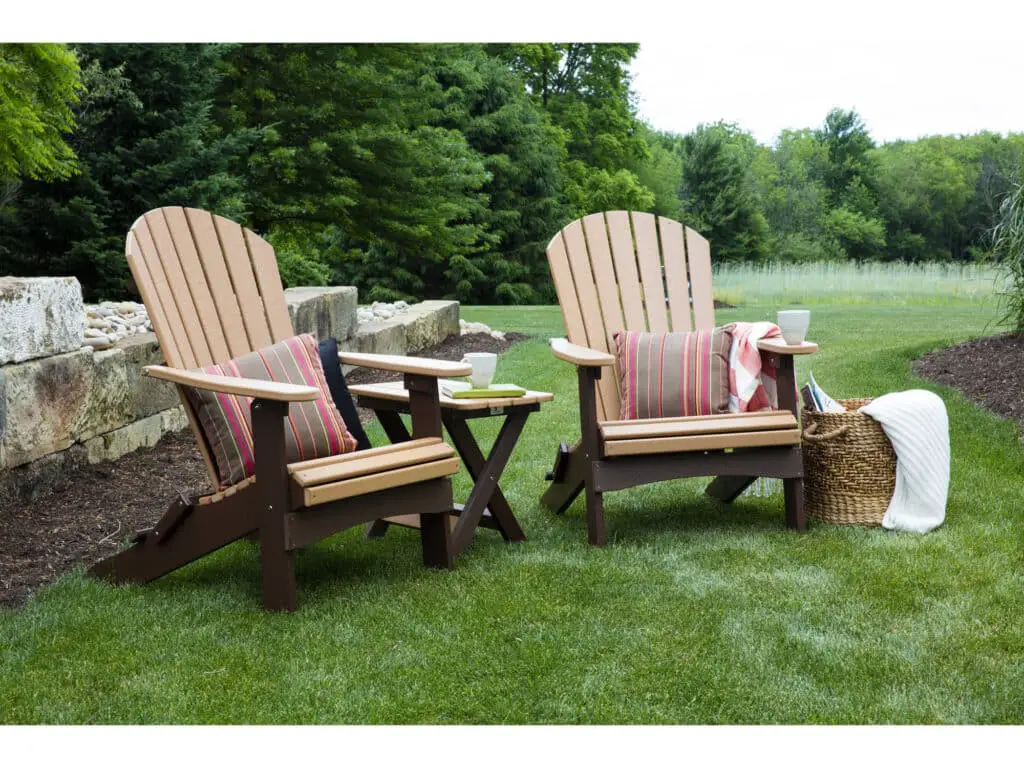How To Reweave A Patio Chair
Introduction
How To Reweave A Patio Chair: Do you want to give it a fresh new look without spending a fortune on buying a new one. Well, you’re in luck! In this article, we will guide you through the process of reweaving a patio chair, so you can enjoy a stylish and comfortable seating option in your outdoor space.
There are several reasons why reweaving a patio chair is a great idea. Firstly, it allows you to save money. Instead of buying a brand new chair, you can simply repair and refresh your existing one. This is especially beneficial if you have multiple chairs that need attention. Secondly, reweaving gives you the opportunity to customize your chair. You can choose from a variety of materials and patterns to create a unique look that matches your personal style and the overall aesthetic of your patio. Lastly, reweaving is an environmentally friendly option. By reusing and repurposing your old chair, you are reducing waste and contributing to a more sustainable lifestyle.
Before you start reweaving your brick patio chair, it’s important to gather all the necessary tools and materials. You will need a pair of scissors or a utility knife to remove the old weaving, a tape measure to determine the length of the new material, and a staple gun or tacks to secure the new weaving in place. Additionally, you will need the new weaving material itself. There are various options available, such as synthetic rattan, nylon cord, or even fabric strips. Choose a material that is durable and weather-resistant to ensure the longevity of your reweaved chair.

How do you restore resin outdoor furniture?
“The wax repels dirt and can restore the sheen.” Simply apply a thin layer of wax to the resin surfaces with a soft cloth, then buff it out. Over time, the protective coating on the cushions also breaks down, so you might want to spray on a fresh layer of protective fabric spray, too.
Restoring resin outdoor furniture is a great way to breathe new life into your patio or garden space. Over time, resin furniture can become faded, dirty, and worn-looking. However, with a little bit of effort and the right techniques, you can easily restore your resin furniture to its former glory.
The first step in restoring resin outdoor furniture is to thoroughly clean it. Start by removing any loose dirt or debris with a brush or broom. Then, mix a solution of warm water and mild dish soap in a bucket. Use a sponge or soft cloth to scrub the furniture, paying special attention to any areas that are particularly dirty or stained. Rinse the furniture with clean water and allow it to dry completely before moving on to the next step.
Once your resin furniture is clean and dry, you can begin the restoration process. If the furniture is faded or discolored, you may want to consider using a spray paint specifically designed for outdoor use. Choose a color that complements your outdoor space and apply the paint in thin, even coats. Allow each coat to dry before applying the next, and be sure to follow the manufacturer’s instructions for best results.
How do you restore a polypropylene chair?
Restoring a polypropylene chair is a cheap and easy method to update old furniture. Polypropylene chairs are popular for indoor and outdoor use due to its durability and wear resistance. These chairs might fade, discolor, or degrade over time, requiring maintenance to restore them.
Restoring a polypropylene chair begins with a thorough cleaning. Use mild detergent and warm water. Dirt, grime, and stains on the chair must be removed. Scrub the chair gently with a gentle brush or sponge to avoid damaging the material. Before continuing, rinse the chair with clean water and let it dry.
Use a heat gun or hairdryer to fix chair scratches and scuffs. Heat from these instruments softens polypropylene, allowing it to be molded and smoothed. Overheating can deform or melt the material, so apply heat evenly. After repairing scratches and scuff marks, lightly sand the chair to smooth out any irregularities.
How long do sling patio chairs last?
Sling patio chairs are a popular choice for outdoor seating due to their comfort, durability, and stylish design. However, like any other furniture, the lifespan of sling patio chairs can vary depending on several factors. These factors include the quality of materials used, the level of care and maintenance, and the environmental conditions they are exposed to.
The quality of materials used plays a significant role in determining the lifespan of sling patio chairs. High-quality materials such as durable fabrics and sturdy frames can ensure that the chairs last for a long time. Chairs made with cheap materials may not withstand regular use and exposure to outdoor elements, resulting in a shorter lifespan.
The level of care and maintenance also affects how long sling patio chairs last. Regular cleaning and proper maintenance can help extend their lifespan. It is important to follow the manufacturer’s instructions for cleaning and storing the chairs to prevent damage. Additionally, using protective covers during harsh weather conditions can help protect the chairs from excessive wear and tear.
The environmental conditions the chairs are exposed to can significantly impact their lifespan. Sling patio chairs that are constantly exposed to direct sunlight, rain, or extreme temperatures may deteriorate faster compared to chairs placed in more sheltered areas. UV rays from the sun can cause fading and weakening of the fabric, while excessive moisture can lead to mold and mildew growth.
Overall, the lifespan of sling patio chairs can range from several years to over a decade, depending on the factors mentioned above. Investing in high-quality chairs, practicing proper care and maintenance, and providing adequate protection from harsh environmental conditions can help ensure that your sling patio chairs last for a long time.
How do you restore a cane back chair?
Restoring a cane back chair can be a rewarding project that allows you to breathe new life into a piece of furniture with historical or sentimental value. Whether you have a family heirloom or a thrift store find, restoring a cane back chair requires some time, patience, and a few basic tools. By following a few simple steps, you can restore a cane back chair to its former glory.
Step 1: Assess the Damage
Before you begin the restoration process, it’s important to assess the damage to the cane back chair. Look for any broken or loose cane strands, as well as any structural issues with the chair frame. Take note of any repairs that need to be made before moving forward.
Step 2: Remove the Old Cane
To restore a cane back chair, you’ll first need to remove the old cane. This can be done by carefully cutting away the cane strands using a utility knife or scissors. Be sure to remove all of the old cane, including any glue or remnants that may be left behind.
Step 3: Repair the Chair Frame
Once the old cane has been removed, it’s time to repair any structural issues with the chair frame. This may involve regluing loose joints, replacing broken or missing pieces, or reinforcing weak areas. Use wood glue and clamps to secure any loose joints and allow them to dry completely before moving on to the next step.
Step 4: Prepare the New Cane
After the chair frame has been repaired, it’s time to prepare the new cane. Soak the cane strands in warm water for about 30 minutes to make them more pliable. This will make it easier to weave the cane into the chair back.
Is it hard to reupholster a chair yourself?
Upholstering a chair is a fun and gratifying DIY project, but beginners may find it difficult. The complexity of the chair design, your experience, and the materials and tools you have determine whether reupholstering a chair is difficult.
Reupholstering a chair is a steep learning curve for beginners. The method includes removing the old fabric, mending or replacing the padding, cutting and sewing the new fabric, and connecting it to the chair frame. Each stage needs expertise and precision, which may take time and effort to master.
Second, chair design intricacy can affect reupholstering difficulty. Upholstering chairs with elaborate shapes, curves, or features may take longer. Chairs with numerous layers of fabric or cushioning are harder to work with since you must carefully remove and replace each layer.
Thirdly, the materials and tools you have available can also impact the difficulty of reupholstering a chair. Having the right tools, such as a staple gun, upholstery needles, and fabric scissors, can make the process much easier. Similarly, using high-quality upholstery fabric and padding can result in a more professional-looking and durable finished product.
What materials are needed to reweave a patio chair?
When reweaving a patio chair, there are several materials that you will need to ensure a successful project. The first and most important material is the replacement webbing or strapping. This can be made of various materials such as nylon, polyester, or even natural fibers like jute or cotton. It is important to choose a material that is durable and weather-resistant to withstand outdoor conditions.
In addition to the webbing, you will also need a few tools to help with the reweaving process. These tools include a pair of scissors or a utility knife to cut the webbing, a tape measure to ensure accurate measurements, and a staple gun or tacks to secure the webbing to the chair frame. It is also helpful to have a hammer or mallet to ensure the webbing is tightly secured.
In summary, the materials needed to reweave a patio chair include replacement webbing or strapping, scissors or a utility knife, a tape measure, a staple gun or tacks, and a hammer or mallet. These materials will help you successfully reweave your patio chair and restore its functionality and aesthetic appeal.
Are there any specific techniques or patterns to follow when reweaving a patio chair?
When reweaving a patio chair, there are indeed specific techniques and patterns that should be followed to ensure a successful outcome. One common technique is known as the “”over-under”” pattern, where the weaver alternates weaving over and under the chair’s frame. This pattern helps create a sturdy and visually appealing weave.
Another important technique is maintaining consistent tension throughout the weaving process. This can be achieved by using clamps or weights to hold the chair frame in place while weaving. It is crucial to keep the tension even to prevent sagging or loose areas in the weave.
Additionally, it is recommended to start weaving from the center of the chair and work outward. This helps maintain symmetry and balance in the overall weave. Following a specific pattern, such as a basket weave or a herringbone pattern, can also add visual interest to the chair.
Are there any common mistakes to avoid when reweaving a patio chair?
When reweaving a patio chair, there are several common mistakes that should be avoided to ensure a successful outcome. One common mistake is not properly preparing the chair before starting the reweaving process. It is important to thoroughly clean the chair and remove any old or damaged weaving material. Failure to do so can result in an uneven and unstable final product.
Another common mistake is using the wrong type of weaving material. It is essential to choose a material that is suitable for outdoor use and can withstand the elements. Using a material that is not weather-resistant can lead to premature deterioration and the need for frequent repairs.
Additionally, it is important to avoid rushing the reweaving process. Taking the time to carefully weave each strand and ensure proper tension is crucial for a durable and visually appealing result. Rushing through the process can result in uneven weaving and a chair that is not structurally sound.
Are there any alternative methods or materials that can be used for reweaving a patio chair?
Yes, there are alternative methods and materials that can be used for reweaving a patio chair. One alternative method is using synthetic materials instead of natural fibers. Synthetic materials such as nylon or polypropylene can be used to reweave a patio chair, offering durability and resistance to weather conditions. These materials are often easier to work with and require less maintenance compared to natural fibers.
Another alternative method is using pre-woven chair caning or webbing. Pre-woven chair caning or webbing is available in various patterns and materials, such as cane, rattan, or synthetic materials. This method involves replacing the entire seat or back of the chair with the pre-woven material, eliminating the need for intricate weaving techniques. It can be a quicker and simpler solution for reweaving a patio chair.

Conclusion
Learning how to reweave a patio chair can be a valuable skill to have, as it allows you to repair and restore your outdoor furniture without having to replace it. Whether your patio chair has a damaged or worn-out seat, reweaving it can give it a new lease on life and save you money in the process. While the process may seem daunting at first, with the right tools and techniques, you can easily reweave your patio chair and have it looking as good as new.
The first step in reweaving a patio chair is to assess the damage and determine the type of weave that needs to be replaced. There are several different types of weaves commonly used in patio chairs, including cane, rush, and wicker. Each type of weave requires a slightly different approach, so it’s important to identify the specific weave before you begin. Once you have identified the type of weave, you can gather the necessary materials and tools.
Before you start reweaving, it’s important to prepare the patio chair by removing any old or damaged weave. This can be done by carefully cutting away the damaged sections with a sharp knife or scissors. Once the old weave has been removed, you can begin reweaving the chair using the appropriate technique for the type of weave you are working with. This may involve threading new strands of cane or wicker through the existing framework of the chair, or weaving rush strands in a specific pattern.








